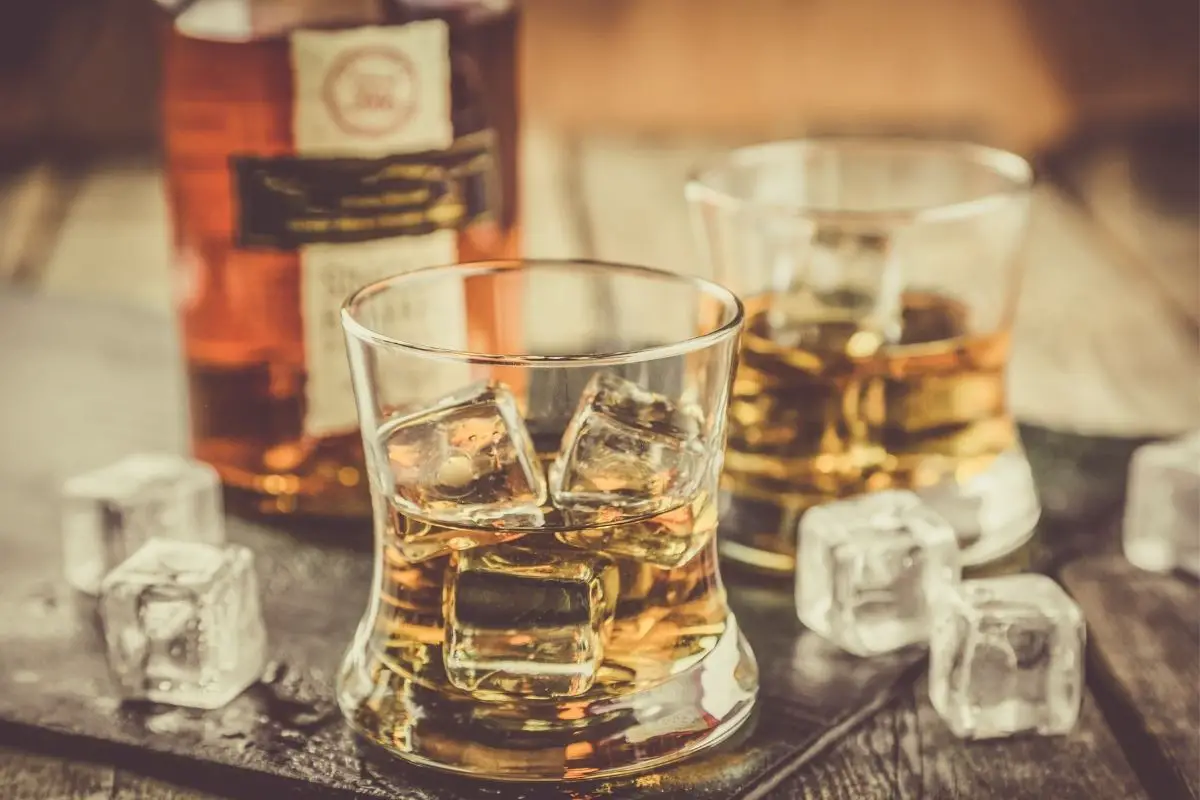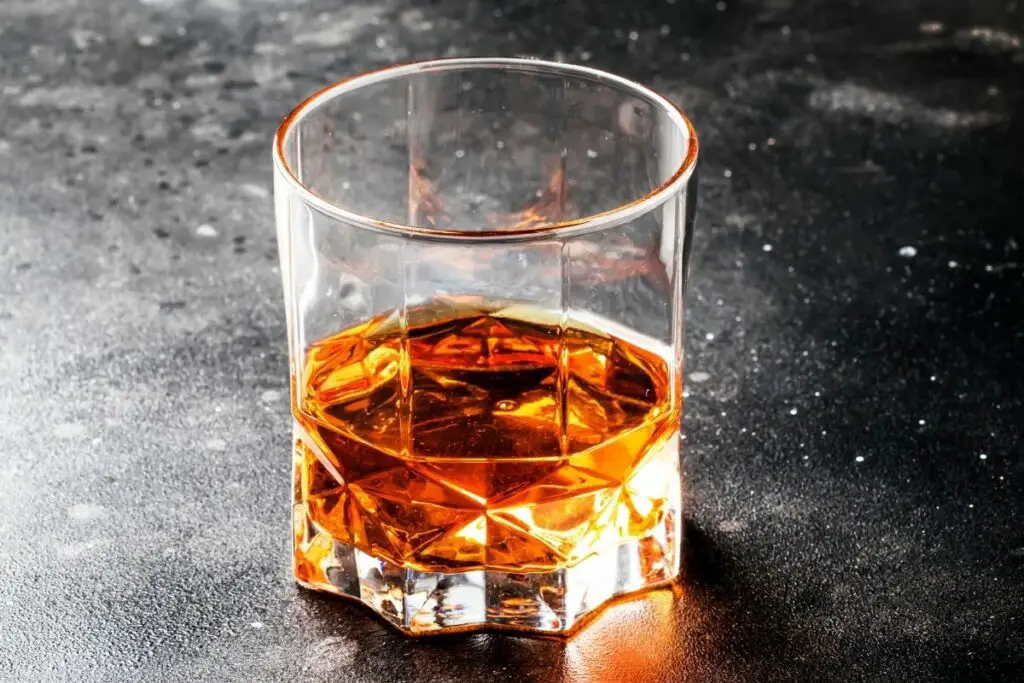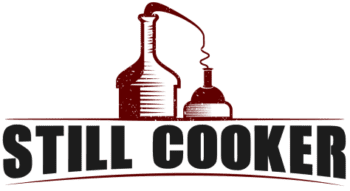Bourbon is one of the nation’s favorite drinks. This variation on whiskey is a staple of American alcohols, and is also one of the most versatile.
Drink it neat, on the rocks, or put it in your favorite cocktails – the possibilities are endless! But despite its popularity, the process of making bourbon is a mystery to many people.

Luckily, we’re here to clear up the confusion! This article has everything you need to know about making bourbon, from the ingredients to the bottle.
Here we’ll take a close look at each step along the production timeline, and help you learn more about America’s favorite spirit. So without further ado, let’s dive right in!
What Is Bourbon?
First things first – what exactly is bourbon? There’s a lot of confusion surrounding the drink, mostly regarding the differences between bourbon and whiskey.
Some people may say that there aren’t any differences between the two, but this isn’t the case. In reality, there are a couple of things that set these drinks apart.
Bourbon is a variation of whiskey, sharing mostly the same components and following a similar aging process (bar a few differences). Think of it as a rectangles-and-squares situation – all bourbons are a variety of whiskey, but most whiskeys aren’t bourbon.
Whiskey is made of 100% malted barley, although some grain whiskeys also include unmalted barley and wheat alongside this. By contrast, bourbon is made of a combination of different grains, and must contain a minimum of 51% corn to be considered bourbon.
Both alcohols are aged in wooden barrels; while whiskey is aged in either European oak or American white oak, bourbon has to be aged in charred American oak barrels.
Additionally, whiskey is typically aged in barrels that previously held other alcohols (typically bourbon, sherry, or cognac), while bourbon is aged in a new barrel – on top of this, the bourbon must be produced solely in the USA to be considered bourbon.
The differences between whiskey and bourbon might seem small, but they can dramatically affect the drink’s taste, color, and what it can legally be considered. But now that we know exactly what bourbon is, it’s time to look at how it’s made!
How Bourbon Is Made
The process of making bourbon is complicated and precise, and it takes years to craft a delicious, high-quality product while still keeping in line with the rigid stipulations that make it an authentic bourbon.
Here we’ll take you through each step in the production of bourbon, to make this complicated process easier to understand.
An important thing to remember is that making spirits at home without the proper license is illegal. Bourbon-making is an interesting process, but leave it to the professionals!

1. Gathering The Grains
First, the components of the bourbon need to be gathered. These are the grains that will eventually end up as the spirit we know and love.
As mentioned earlier, bourbon needs to contain a minimum of 51% corn to be considered authentic bourbon.
The other 49% is made up of a combination of other grains, including barley, wheat, and rye.
Most bourbon uses more than 51% corn, often between 60-80%. The other grains are typically no more than 10-15% each, and not every bourbon will use all three of these grains.
Another important component of bourbon-making is water. Most bourbon distilleries are in Kentucky and Tennessee, which lie on large limestone layers.
These are not only great at filtering groundwater, but there are many springs located in valleys around these states that are full of fresh, clean water perfect for making bourbon.
2. Making The Mash
With the grains gathered, it’s time to process them.
One of the most important parts of bourbon-making is a thing called ‘mash’, which is a mixture of the grains and water that have been cooked into a smooth, oatmeal-like solution.
But you can’t make mash with the grains in their current state, so you need to prepare them first.
The grains are put through a mill, where they are crushed and ground into a fine flour. They are crushed first to open the husk, at which point they are sifted to separate the husk from the actual grain itself.
From here, the grain is ground to produce flour.
This flour is then mixed with the spring water, and the mix is then cooked in a large metal vat.
It is typically cooked for around 30 minutes at approximately 200℉, although this can vary depending on the grains being used. The cooked mixture is the mash.
3. Preparing The Yeast
After the mash is cooked, it’s left to cool down to get it ready to add yeast. This is the catalyst to the process of converting mash to alcohol.
On top of being one of the most important steps along the way, it’s also one of the most precise and can cause the entire batch to fail if not done properly.
Every bourbon distillery has its own strain of yeast, and they take careful steps to keep these strains a secret from their competitors and the public.
The yeast is kept in a cooled room to keep it alive, as high temperatures can kill it and stop it from activating in the mash – this is why the mash needs to cool down before the yeast can be added.
A small amount of yeast, only around the size of a pencil tip, is added to a glass bulb filled with a special nutrient solution.
Here, it will start to reproduce. Once around half a liter has been reproduced, the yeast is moved to a larger metal container, known as the donna tub.
This lets the yeast reproduce even more, and it is eventually moved to an even bigger metal tank, ready for the fermentation process.
4. Fermentation
Here’s where the alcohol starts to make an appearance. The mash is put into a fermentor (massive containers made out of wood or metal), along with a portion of the yeast.
In the fermentor, the yeast will start to eat the glucose and starch produced when the ground grains were cooked into the mash. As this happens, the yeast converts the sugars into alcohol and releases them back into the mash.
Parts of the stillage are also added during the fermentation process. Stillage is the fibers and pieces of grain leftover from distillation (which we’ll get to later), which are kept and reused in later batches.
Acidic parts of the stillage are reintroduced to the mash, which raises its pH and creates what is known as ‘sour mash’.
Sour mash improves the fermentation process by helping the yeast flourish even more while also removing any bacteria from the mix.
The entire fermentation process takes three days, at which point the mash is left at around 8-9% ABV.
5. Distillation
Distillation is what turns the mash into bourbon, and is the most complicated part of making the drink we all know and love.
Distilling bourbon involves heating up the mash to separate the solid material from the liquid alcohol, which is evaporated and cooled several times to increase its alcohol content.
Bourbon is distilled in a column still; this is a tall, pillar-shaped pipe with several levels on its interior.
First, the mash is put into the lower parts of the still. It is then heated, to start separating the alcohol from the solid matter.
As the mash is heated up the alcohol turns into vapor and starts to rise up in the still. It goes through holes in the floor of each level, which are curved upward to stop condensed vapor from flowing back down.
Meanwhile, the leftover solid fibers and pieces of grain are collected in the bottom of the still – this is the stillage that will be reused in later batches.
The vapor will continue to rise in the still until it reaches the top.
The still’s temperature is carefully regulated to keep the top cooler than the bottom, which means that the vapor will condense into strong alcohol without any physical remnants of the mash.
This alcohol is usually around 60% ABV, although some stills can create alcohol up to 80% ABV.
The alcohol is then moved to a doubler, a closed copper pot made of two tanks.
The copper improves the taste of the alcohol through a process called catalytic conversion. It is heated into vapor during this stage, and is then put into a condenser where it forms raw whiskey.
6. Aging And Storage
As mentioned earlier, one of the most important aspects of making bourbon is how it’s aged. The raw whiskey is transferred to fresh, charred barrels made of American white oak. Each barrel holds 53 gallons of bourbon.
The bourbon is left to age in the barrel for a minimum of two years, although many distillers say that the optimum aging time is between 6-12 years.
During this time, the barrels need to be kept at a controlled temperature to ensure it reaches the right maturation.
7. Bottling
After the bourbon has aged, it’s finally time to bottle it up. This might seem simple, but there are still some important things to consider here.
Parts of the barrel’s interior will have broken off during the aging process, so there will be pieces of wood and debris floating around in the bourbon.
These need to be filtered out before bottling. There’s also the question of how to get the bourbon from barrel to bottle in the first place.
The barrels of aged bourbon are opened via a small hole drilled in the side. They are then poured out through a fine sieve to filter out any solid pieces of wood and charcoal from inside the barrel.
From here, it flows into a storage vat, which pumps it to the bottling line. A small quantity of each batch is kept aside to check its quality, alcohol content, and taste.
Finally, the bourbon is poured into each bottle. The bottles are then labeled, packed into crates, and shipped to stores where you can get your own to enjoy.
Final Thoughts
Bourbon is one of the most popular forms of liquor in America, but it takes a lot of time and effort to make it.
Now you know a bit more about how this great drink is made, from the ingredients it starts with, to the process of turning it into the spirit we all know and love.
So next time you’re sipping a bourbon on the rocks or savoring an old-fashioned, have a think about the work that went into getting your drink into the glass. But most importantly – enjoy!
- Vevor Still Instructions - June 12, 2023
- Best Proofing Parrots For Home Distilling - February 1, 2023
- What Is A Porter Beer? - June 12, 2022
